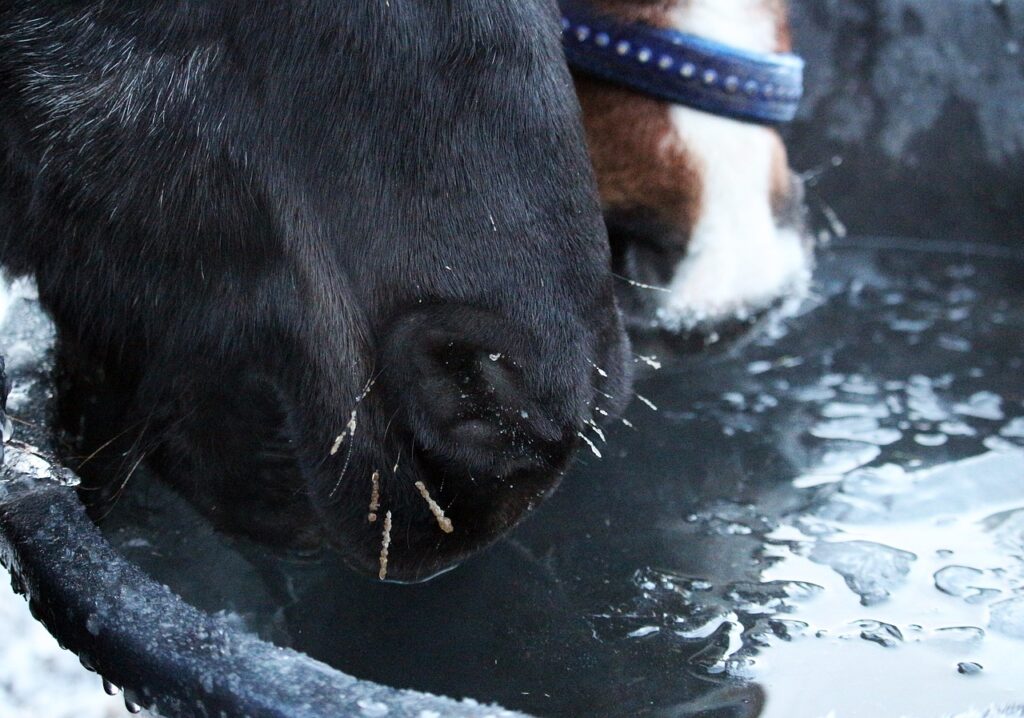
Well, winter has arrived… are you tired of breaking ice in your livestock’s water trough, yet?
We all know just how important it is for your animals to have access to water. However
when the temperatures fall below freezing and you are unable to use a water heater or
you are not comfortable using some kind of water heater, how about a few suggestions
to help with that knuckle skinning chore of “breaking the ice”.
Have you thought about placing your trough for sun exposure?
Place your trough where it will get the most daytime sunlight. Many days we might not
see much winter sun, but if you place the tank in a south facing area, it will increase the
odds of as much sunlight as possible during daylight hours.
Have you thought about insulating your trough?
Styrofoam board or foil covered insulation can be wrapped around the outside of the
tank to keep the exterior cold out and interior warmth of the water in. But guess what,
what works even better – putting one trough inside another with a gap of a couple of
inches all the way around. If you place insulation on the bottom between the two
troughs and around the outside of the interior trough and fill any gaps with spray
insulation that sets hard, you are cooking without heat.
If you really want to “go green”, online resources for those living off the grid have useful
information about how to build insulated troughs and use passive solar heating to
reduce freezing.
Have you tried placing a float in the trough?
Some people swear that floating something, like a soccer ball, in the trough is great,
while others find they don’t work at all. A float keeps the surface of the water moving as
it bobs about, making it more difficult to freeze. Some animals learn to depress the
floating object to expose an open area in the ice so they can drink.
Have you thought about burying your trough?
It might be too late this year, but next year you might think about digging a hole for your
trough to sit into the ground to help with the insulating. This depends on where your
trough is placed and how deep down your ground freezes.
When all else fails, heat your trough.
You just might have to break down and heat your trough. But before you try using
battery, electric or propane heaters, try using manure under your trough. Did you know
that composting manure generates heat? As it breaks down, it will help warm the
trough.
It really doesn’t matter which method you decide to try, you will still need to check the
water trough at least twice a day to guarantee drinking during cold weather.